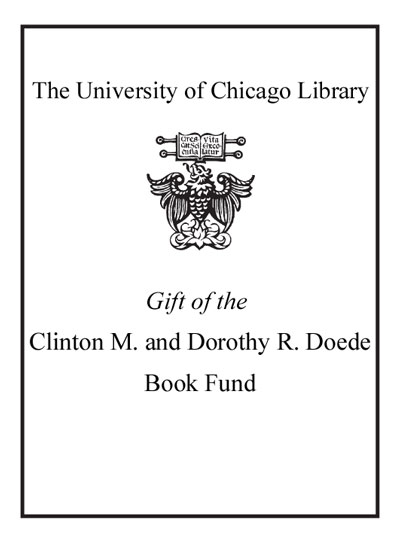|
|
|
|
| LEADER |
00000pam a2200000 i 4500 |
| 001 |
9021724 |
| 003 |
ICU |
| 005 |
20130830080000.0 |
| 008 |
121015s2013 coua b 001 0 eng |
| 010 |
|
|
|a 2012036689
|
| 020 |
|
|
|a 9781936221035 (hardback)
|
| 020 |
|
|
|a 1936221039 (hardback)
|
| 035 |
|
|
|a 9021724
|
| 035 |
|
|
|a (OCoLC)441208141
|
| 040 |
|
|
|a DLC
|b eng
|e rda
|c DLC
|d BTCTA
|d YDXCP
|d NhCcYBP
|d UtOrBLW
|
| 042 |
|
|
|a pcc
|
| 082 |
0 |
0 |
|a 560/.1723
|2 23
|
| 084 |
|
|
|a SCI054000
|2 bisacsh
|
| 090 |
|
|
|a QE721.2.E85
|b D68 2013
|
| 100 |
1 |
|
|a Erwin, Douglas H.,
|d 1958-
|0 http://id.loc.gov/authorities/names/n93039647
|1 http://viaf.org/viaf/27154327
|
| 245 |
1 |
4 |
|a The Cambrian explosion :
|b the construction of animal biodiversity /
|c Douglas H. Erwin, Department of Paleobiology, National Museum of Natural History, Washington, DC and Santa Fe Institute, Santa Fe, NM, James W. Valentine, Department of Integrative Biology, University of California, Berkeley.
|
| 264 |
|
1 |
|a Greenwood Village, Colorado :
|b Roberts and Company,
|c [2013]
|
| 300 |
|
|
|a x, 406 pages :
|b illustrations (some color) ;
|c 27 cm
|
| 336 |
|
|
|a text
|2 rdacontent
|0 http://id.loc.gov/vocabulary/contentTypes/txt
|
| 337 |
|
|
|a unmediated
|2 rdamedia
|0 http://id.loc.gov/vocabulary/mediaTypes/n
|
| 338 |
|
|
|a volume
|2 rdacarrier
|0 http://id.loc.gov/vocabulary/carriers/nc
|
| 504 |
|
|
|a Includes bibliographical references and index.
|
| 505 |
8 |
|
|a Machine generated contents note: 1. Introduction -- 2. Stratigraphy and Geochronology -- 3. Environmental changes -- 4. Classification and the Metazoan Tree of Life -- 5. Dawn of Animals: the Ediacaran Fauna -- 6. Metazoan Architectures of the Cambrian Explosion -- 7. Ghostly Ancestors -- 8. The Origin of Metazoan Ecosystems -- 9. The Metazoan Genome and the Cambrian Explosion -- 10. Constructing the Cambrian.
|
| 520 |
|
|
|a "The Cambrian Period records one of the most extraordinary transitions in the history of life. Although animals may have first appeared nearly 700 million years ago, with the earliest sponges, their initial diversifications appear to have been modest until a richly diverse fossil fauna appeared relatively abruptly about 170 million years later. In The Cambrian Explosion, Erwin and Valentine synthesize research from many fields to explain why there was such remarkable novelty of animal forms"--
|c Provided by publisher.
|
| 650 |
|
0 |
|a Evolutionary paleobiology.
|0 http://id.loc.gov/authorities/subjects/sh90005335
|
| 650 |
|
0 |
|a Paleontology
|y Cambrian.
|0 http://id.loc.gov/authorities/subjects/sh85097124
|
| 650 |
|
0 |
|a Biodiversity
|x Climatic factors.
|0 http://id.loc.gov/authorities/subjects/sh2004001331
|
| 650 |
|
7 |
|a Biodiversity
|x Climatic factors.
|2 fast
|0 http://id.worldcat.org/fast/fst01429889
|
| 650 |
|
7 |
|a Cambrian Geologic Period.
|2 fast
|0 http://id.worldcat.org/fast/fst01352218
|
| 650 |
|
7 |
|a Evolutionary paleobiology.
|2 fast
|0 http://id.worldcat.org/fast/fst00917345
|
| 650 |
|
7 |
|a Paleontology.
|2 fast
|0 http://id.worldcat.org/fast/fst01051513
|
| 648 |
|
7 |
|a From 500 to 570 million years ago
|2 fast
|
| 700 |
1 |
|
|a Valentine, James W.
|0 http://id.loc.gov/authorities/names/n79026982
|1 http://viaf.org/viaf/24677035
|
| 903 |
|
|
|a HeVa
|
| 929 |
|
|
|a cat
|
| 999 |
f |
f |
|i d6a12c4d-ffd1-5cd5-99a0-14a8802150b0
|s f06b4a2f-fe91-5425-bf63-117404ac796e
|
| 928 |
|
|
|t Library of Congress classification
|a QE721.2.E85 D68 2013
|l JCL
|c JCL-Sci
|i 1204322
|
| 927 |
|
|
|t Library of Congress classification
|a QE721.2.E85 D68 2013
|l JCL
|c JCL-Sci
|e DOED
|e CRERAR
|b 107560248
|i 9134106
|


